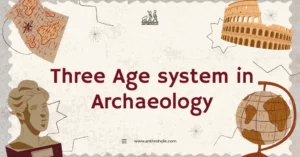AI Answer Evaluation Platform Live Now. Try Free Answer Evaluation Now
Language and Thought
Language and thought share an intimate connection. The ability to cogitate complex concepts is intrinsically tied to our linguistic capabilities.

The Role of Language in Thought
Intricate thought processes hinge on language to be effectively articulated and communicated. In other words, language is the medium through which thought finds tangible form. This doesn’t, however, suggest that thought cannot exist without language, but rather that language augments and refines thinking.
- Articulation of Thought: Language allows us to express thoughts and ideas in a way that others can understand. Without a common language, we would have difficulty conveying our internal cognitive processes [1].
- Formulation of Concepts: Abstract ideas are defined and structured through language. Categories like “time,” “justice,” and “freedom” are defined and understood via our linguistic capabilities [2].
The Whorfian Hypothesis
Sapir and Whorf’s Linguistic Relativity Principle, often referred to as the Whorfian hypothesis, contends that the structure of a language influences the ways its speakers conceptualize their world [3].
- Strong Version: Also known as linguistic determinism, asserts that the language we speak determines the way we think and perceive the world.
- Weak Version: Suggests that language merely influences thought and perception, but does not determine it.
| Strong Version | Weak Version | |
|---|---|---|
| Determination | Yes | No |
| Influence | Yes | Yes |
Evidence Supporting the Whorfian Hypothesis
Studies have shown that speakers of different languages perceive certain aspects of the world differently.
- Color Perception: Berlin and Kay’s study found that the words a language has for colors can influence how its speakers perceive those colors [4].
- Spatial Orientation: Levinson’s research showed that speakers of languages that use cardinal directions for spatial orientation are consistently aware of their geographical positioning.
The Role of Culture in Shaping Language and Thought
Language does not exist in a vacuum. It is an intrinsic part of a culture, shaping and being shaped by it. Culture has a significant role in guiding the evolution of language and consequently, thought processes.
- Cultural Vocabulary: Certain languages have specific words for concepts that are central to their culture, demonstrating the link between cultural relevance and language evolution.
- Cultural Cognition: Language can embody cultural cognition, carrying forward cultural values, beliefs, and norms.
The Cognitive Benefits of Bilingualism and Multilingualism
Bilingualism and multilingualism provide cognitive benefits beyond the mere ability to communicate in different languages. Bilingual and multilingual individuals often demonstrate superior abilities in certain cognitive domains.
- Improved Executive Function: Studies have shown that bilinguals and multilinguals often perform better in tasks requiring executive function.
- Increased Cognitive Flexibility: Bilingualism has been associated with enhanced cognitive flexibility and creativity.
Counterarguments and Criticism
There are criticisms and counterarguments against the Whorfian hypothesis. The Universalist theory, for instance, posits that cognitive processes are largely universal and independent of language.
- Language Acquisition: Pinker argues that children acquire language based on universal cognitive structures, not cultural specificities.
- Cross-Linguistic Studies: Lucy’s research reveals no significant differences in cognitive processes between speakers of different languages.
Bridging the Gap: Language and Thought Co-evolution
A more contemporary viewpoint posits that language and thought have co-evolved. Language evolution and cognitive development have influenced each other over time, resulting in our current cognitive-linguistic capabilities.
- Interplay of Language and Cognition: Language evolution has been guided by cognitive constraints, while cognition has adapted to handle complex linguistic structures.
- Neural Plasticity: Changes in brain structure, in response to language use, could have facilitated cognitive development.
In conclusion, language and thought are intimately interwoven, shaping our understanding and perception of the world. While the extent and nature of this relationship are debated, it is undeniable that our linguistic abilities have a significant impact on our cognitive processes.
The Future of Language and Thought Research
There is much that remains to be explored in the field of language and thought. Future research directions could potentially focus on:
- Neuroimaging Studies: Greater use of neuroimaging technologies, like fMRI, could reveal more about the neural basis of language and thought.
- Impact of Technological Evolution: Understanding how the evolving digital language landscape (emojis, internet shorthand etc.) impacts cognitive processes.
- AI and Cognitive Processes: Understanding how AI language models (like GPT-4) mimic human-like thought processes, contributing to cognitive science and artificial intelligence research.
Conclusion
In the realm of linguistic anthropology, language and thought are seen as deeply intertwined. Language not only serves as a vehicle for thought, but it also shapes the way we perceive and interact with our world. The implications of this connection between language and thought are far-reaching, touching upon aspects of our culture, cognition, and even future technologies.
References
[1] Chomsky, N. (1957). Syntactic Structures. The Hague/Paris: Mouton.
[2] Boroditsky, L. (2001). Does Language Shape Thought?: Mandarin and English Speakers’ Conceptions of Time. Cognitive Psychology, 43, 1-22.
[3] Whorf, B.L. (1956). Language, thought, and reality. Cambridge, MA: Technology Press of Massachusetts Institute of Technology.
[4] Berlin, B., & Kay, P. (1969). Basic color terms: Their universality and evolution. Berkeley: University of California Press.




